Milestone year of racial unrest and protests ends with police, demonstrators facing new hurdles
George Floyd's death at the hands of police sparked a wave of national protests.
The way Chris Swanson, the sheriff of Genesee County, Michigan, tells it, the worst tactical decision he could have made as a law enforcement officer -- taking off his helmet as he faced an angry crowd of protesters and joining them -- turned out to be "the best decision of my police career."
On May 31, Swanson and his officers, dressed in riot gear and carrying batons, were standing on Miller Road in Flint, Michigan, between a police station and a large group of protesters he believed "wanted to kill us."
Just seven days earlier, a white police officer 700 miles away in Minneapolis, Minnesota, was recorded on video kneeling on the neck of George Floyd, a 46-year-old Black man. Floyd died as a result of the encounter, igniting a storm of nationwide protests and setting the stage for what historians see as a milestone year of civil and uncivil disobedience.
"George Floyd changed American policing forever. It was a tipping point," Swanson said.
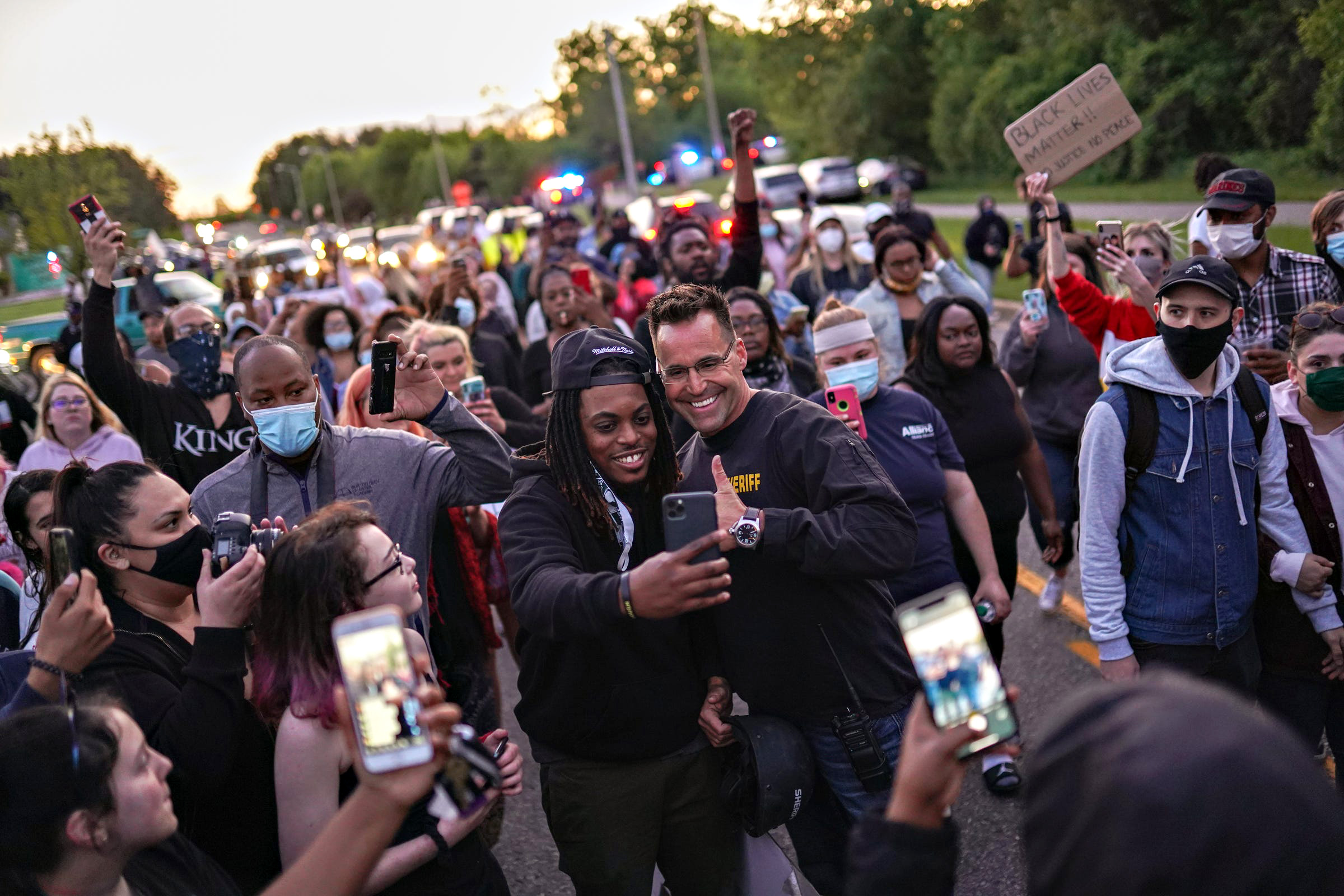
Swanson told ABC News that in the immediate aftermath of Floyd's death he watched with trepidation as businesses in other major cities were looted and set ablaze, and violent clashes broke out between law enforcement officers and demonstrators. As he looked into the faces of the protesters coming at him, he expected Flint to go up in flames, too, if he didn't think of something fast.
"I'd love to say that what I did was something that I thought of way in advance, but it wasn't. I just heard the people, and I heard that they wanted a voice. Subconsciously, I knew that if I took my helmet off it would send a different message," Swanson said.
In a viral video of the encounter, Swanson, a 27-year veteran, removed his helmet, ordered his officers to lay down their batons and he greeted the protesters with a smile. He told the demonstrators, "I want to make this a parade, not a protest."
As curses were drowned out by applause, Swanson told the demonstrators, "These cops love you" and he began to peacefully march with them. He said that of the more than 40 demonstrations in Flint since then "not a single glass broke, not a single board snapped."
Powerful displays of support between officers and community
Swanson's experience illustrates the tensions that surfaced this year between police and communities -- sometimes with destructive consequences. Floyd's death, captured in excruciating detail on video, as well as simmering tensions from other similar incidents over the years, propelled the discussion about race and policing into the national spotlight in a new way that crossed racial barriers and received broad support.
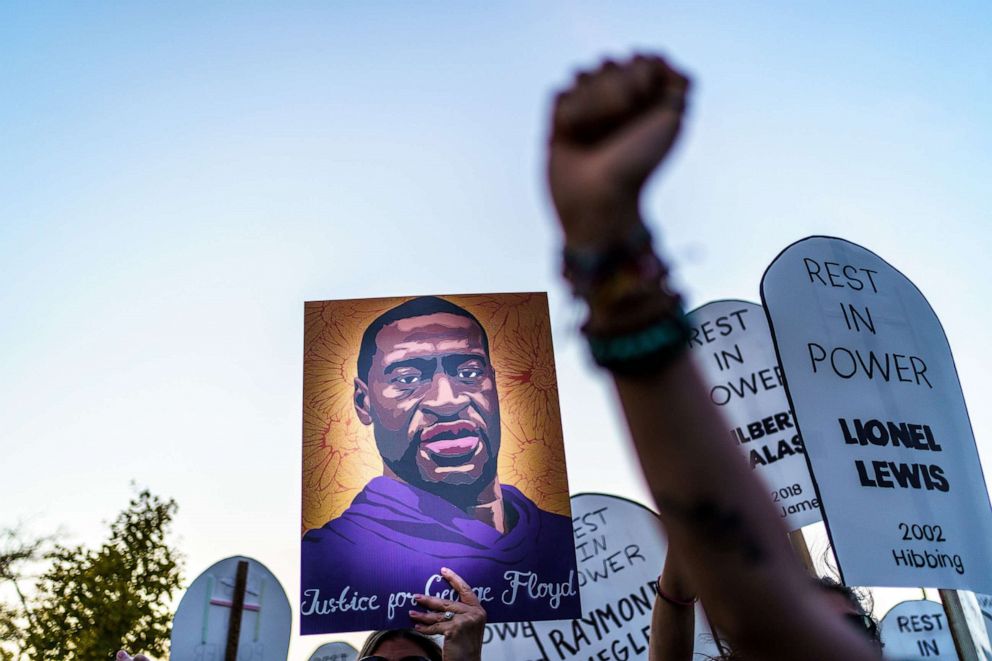
It also sparked broad-based action -- changing police tactics and funding, leading corporations to reconsider who is in the boardroom and sparking deep conversations on race relations, although there is a considerable distance yet to go and strong backlash from certain quarters.
"I need to make sure that that example is carried across our profession and police chiefs and sheriffs, and captains and lieutenants in every police agency across the country see that there's a time to protect, there's a time to serve and there's a time to unify," Swanson said. "This year has been obviously a milestone year at every different level, but locally I will tell you that we have in this community been seen from that day as a beacon of light, a sense of hope."
How did we get here?
Charles McKinney, a history professor and chair of Africana Studies at Rhodes College in Memphis, Tennessee, predicted that 20 years from now, historians will look back on 2020 as a pivotal year in the "African American struggle for freedom, justice, and equality in the United States."
"In the summer of 2020, we saw an unprecedented volume of protests all across the country, literally around the world," McKinney told ABC News. "We've never seen a volume of protest this high before. It's never happened in all of American history. The protests of this past summer are far larger than any of the protests of the 1950s or '60s, or any other moment in American history."
From the corporate boardrooms to the arenas and stadiums of professional sports, Floyd's death caused a large-scale awakening to the wrongs protesters have been focused on for decades -- systemic racism across the board and the disproportionate number of Black people killed or mistreated by U.S. law enforcement officers annually.
While 2020 has been dominated by a deadly pandemic and one of the most divisive presidential campaigns in U.S. history, this year came with a racial reckoning historians such as McKinney say has not been seen since the civil rights movement of the 1960s.
"The purpose of the protests remain the same, to illuminate the issues, to illuminate the problems," McKinney said. "And without those protests, where would we be? This massive moment, the protests constructed at this moment are bringing issue and are illuminating the titanic inequities we see with regard to policing, in regard to who is held accountable for violence and murder and who isn't."
The demonstrations, McKinney said, were a release of pent-up anger over Black people being killed by police and officers repeatedly found justified in their use of deadly force.
In September, three white Louisville, Kentucky, police officers were declared justified in their use of deadly force in the March killing of Breonna Taylor, a 26-year-old Black emergency medical technician. Taylor died in a hail of 32 shots fired by officers, who rammed open the door of her apartment while serving a no-knock search warrant (though the officers claim that they knocked).
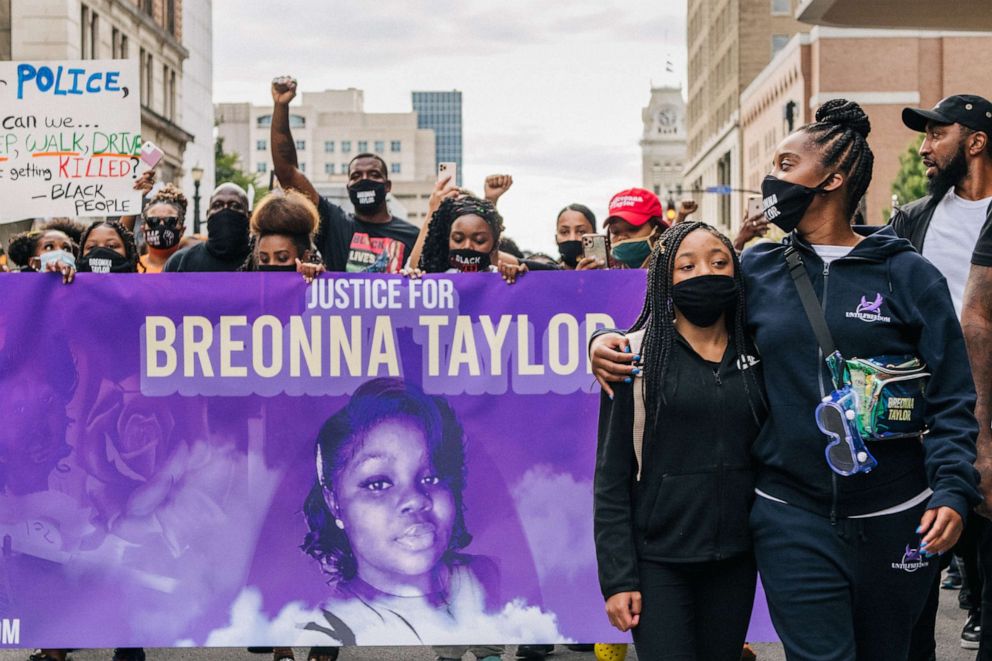
Daniel Cameron, the first Black Kentucky attorney general, said an investigation determined the officers were justified in their use of deadly force, because Taylor's boyfriend, who said he thought the police were intruders, fired the first shot that left one of the officers wounded. Only one officer was charged in the case and not with homicide.
McKinney said another high-profile case that stoked the anger of protesters was that of Ahmaud Arbery, a 25-year-old Black man who was out jogging in his hometown of Brunswick, Georgia, on Feb. 23 when he was allegedly tracked down and cornered by three white men and shot to death. McKinney noted that it took more than two months before anyone was arrested in the case and only after video of the shooting that one of the suspect took emerged.
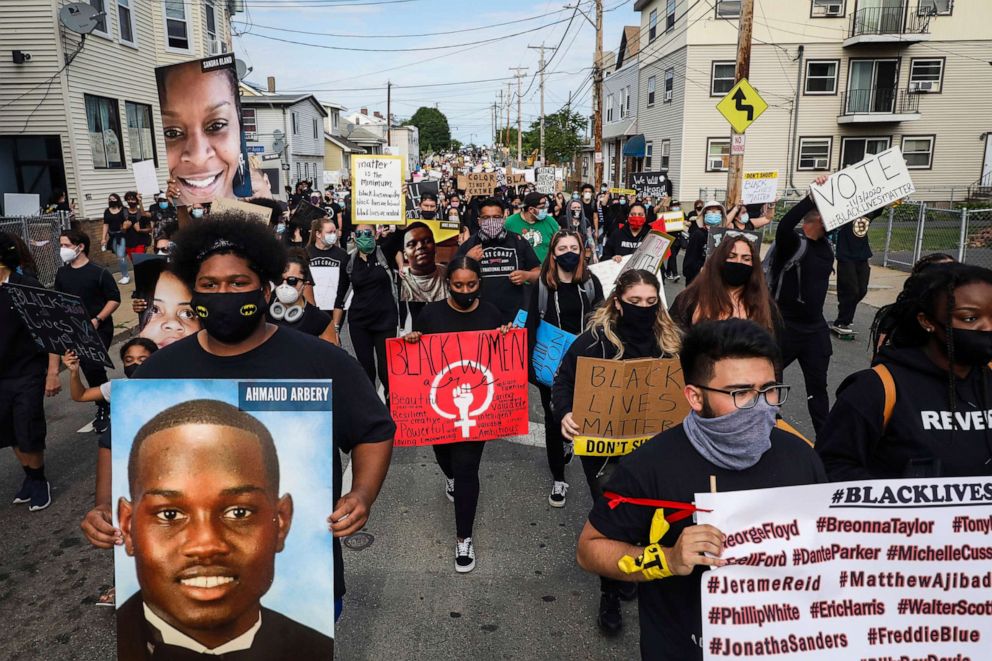
"I think all of that plays into this moment because when you see something that is egregious as the George Floyd incident, when you hear about something egregious as Breonna Taylor, when you see again something as egregious as Ahmaud Arbery, that created a really large space for a large group of people across social lines, across denominational lines to protest," McKinney said.
He also said the reluctance of President Trump to acknowledge that there is a systemic racism problem involving U.S. law enforcement and other facets of society has fanned a resistance to demands for racial justice.
"I mean, the man is clearly no lover of racial justice," McKinney said of the outgoing president.
During a televised ABC town hall event in September, Trump told a Black voter, "I hope there's not a race problem. I can tell you there's none with me because I have great respect for all races -- for everybody. This country is great because of it." The president's comments came just days after he denied systemic racism existed in police agencies at a roundtable discussion on public safety in Kenosha, Wisconsin, where looting and fires erupted following a police shooting of Jacob Blake, a Black man who was left paralyzed.
But at another town hall in October hosted by the Sinclair Broadcast group, Trump acknowledged that systemic racism does exist in policing, saying, "that's a shame."
Protest in a time of COVID
Hawk Newsome, the co-founder of Black Lives Matter Greater New York, said he began protesting the police killings of Black people in 2014, when a grand jury in Staten Island, New York, declined to indict a New York City police officer in the death of Eric Garner. It took five years before the officer was fired and stripped of his pension benefits after a police administrative judge had found him guilty of violating a department ban on chokeholds.
Newsome, 41, said that at the time, he was a recent law school graduate who was planning to practice corporate law and "make a lot of money." But when no one was held accountable for Garner's death, he decided to use his law school education "to fight for people in the streets."
"My degree went 100% into this movement," Newsome told ABC News.
He said that in the six years he's been organizing protests, he has never seen the fight as strong as it's been this year.
"It definitely happens in waves and this year was extremely important because everyone was trapped in their house for COVID," Newsome said. "So you couldn't tune out, it was almost impossible for you to go to work or go on with your ordinary life and not acknowledge the other plague in America, the plague of systemic racism or white supremacy. You had to tune in. I think that was the biggest difference this year. We had literally a captive audience."
He said having the Floyd incident captured on video that went viral, an increasingly common occurrence with the proliferation of cell-phone cameras, also played a big role driving people into the streets to protest.
The BLM movement was launched in 2013 following the acquittal of George Zimmerman, a neighborhood watch member, in the fatal 2012 shooting of Black teenager Trayvon Martin, whom Zimmerman said he mistook for a prowler.
Newsome noted that while the deaths of Garner, Martin and Michael Brown -- the Black teenager fatally shot by a white police officer in Ferguson, Missouri in 2014 -- prompted large protests across the country, he said it wasn't until this year that the decentralized BLM political and social movement became a national and global force.
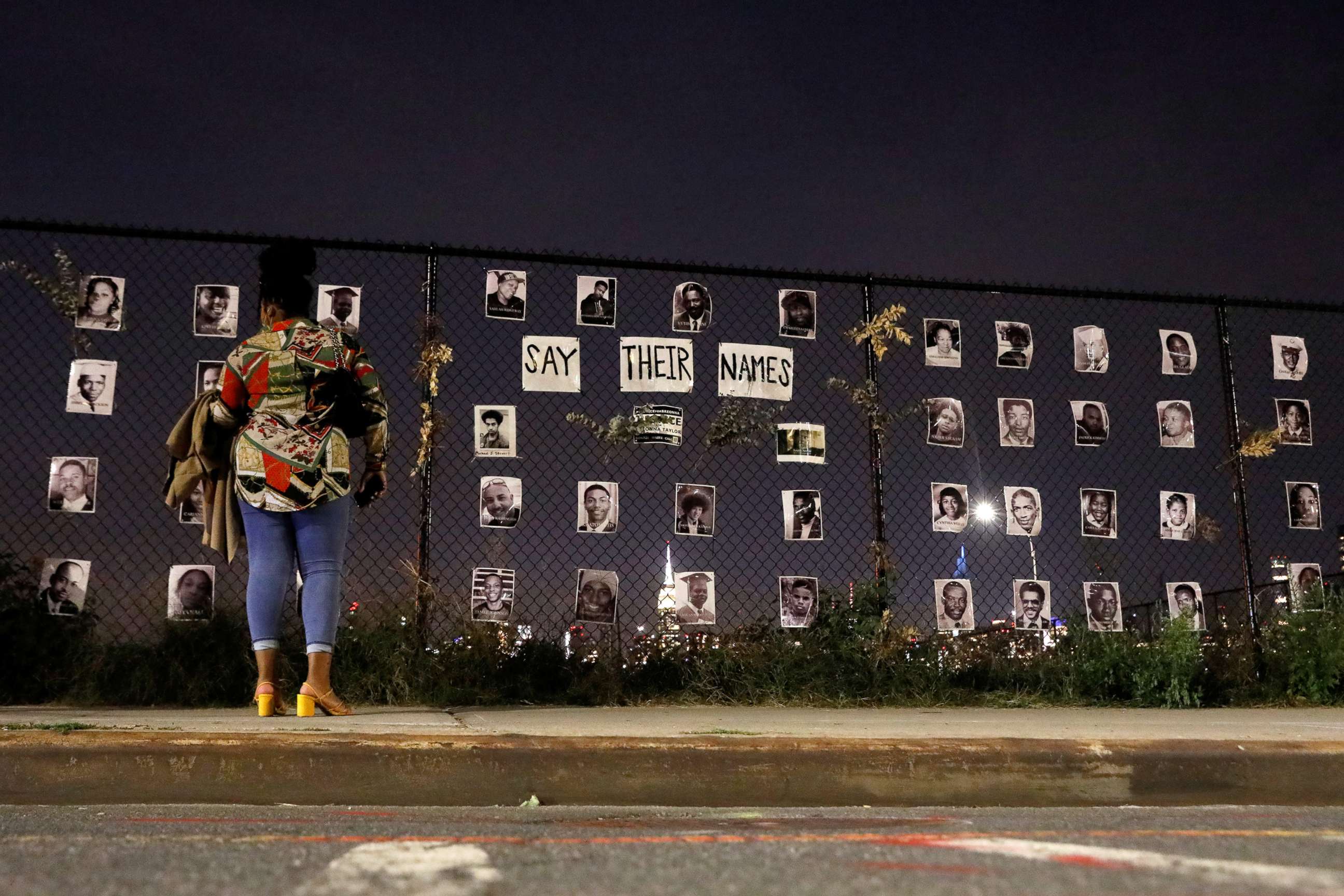
Despite a deadly pandemic that made public gatherings inherently dangerous, protesters, many wearing protective masks, hit the streets across America in droves.
Four polls conducted over the summer, including ones by the Pew Research Center and Kaiser Family Foundation, found that 16 million to 26 million people in America participated in BLM protests following George Floyd's death, making it the largest social movement in U.S. history.
"We've been able to accomplish in three months of the last year, from May to August, what we haven't been able to accomplish in the last three years," said Newsome.
New York State passed a police reform bill package in June that makes it a Class C felony if a police officer injures someone through the use of "a chokehold or similar restraint." The legislation signed by Gov. Andrew Cuomo also included a provision requiring the public release of police officer disciplinary records, but that has since been blocked by a temporary restraining order issued by a federal judge.
The BLM protests also made demands for cities to slash police department budgets and shift resources to social service organizations, a call that seemed to spark political uproar, as well as confusion and misrepresentation around the meaning of the word "defund."
In June, the New York City Council voted to cut $1 billion from the police department budget. And the Minneapolis City Council voted this month to cut its police budget by $8 million and shift that money to violence prevention programs and mental health crisis response teams.
The racial reckoning had broader implications than policing. It extended to corporate and institutional diversity and equity and prompted many prominent companies to reconsider how they do business in a more racially inclusive way and who represents them.
"In 20 years, I want people to look back and say, 'We won. We ended institutional racism. You can't end racism, but you can end institutional racism," Newsome said.
Sustaining the momentum
D'atra "Dee Dee" Jackson, 31, the national director of the Black Youth Project 100, an organization of Black youth activists, said that now begins the hard work of sustaining the momentum in achieving social justice and equality.
"I think the organizing has been the priority for us in this moment of figuring out how to build our communities to be permanently organized in a way that helps to build resiliency, in a way that helps to build deep compassion for the people that live next door to you," Jackson told ABC News.
Jackson said she began protesting following the Zimmerman acquittal in the Trayvon Martin case. At the time, she said she was a 23-year-old grad student at Florida International University.
"The cycle of movements happen in this way where there are uprisings. Then there will be lulls. That's the time we're able to be in deep study and build the long-view strategy of the work that we need to do, how we do it and who we do it with," Jackson said.
Jackson, of Durham, North Carolina, said that this year millennials like her, who at times have been knocked for being a self-obsessed generation, have shown they have compassion and drive to change the status quo for the betterment of society by turning out in droves to protest.
"It means that we're doing something right, that the resistance and the work are not for nothing," Jackson said. "I think this is the best time to be alive, honestly."




